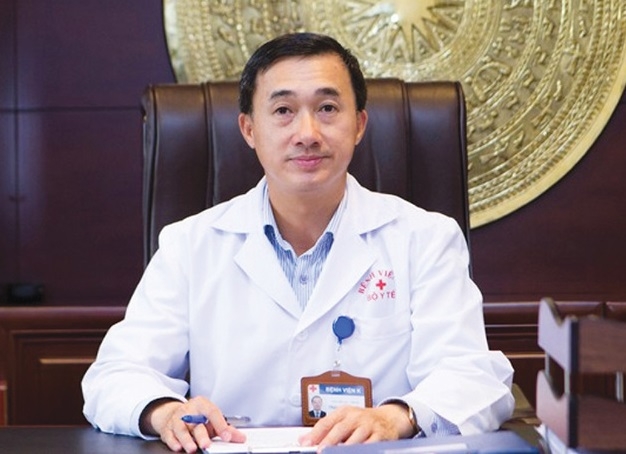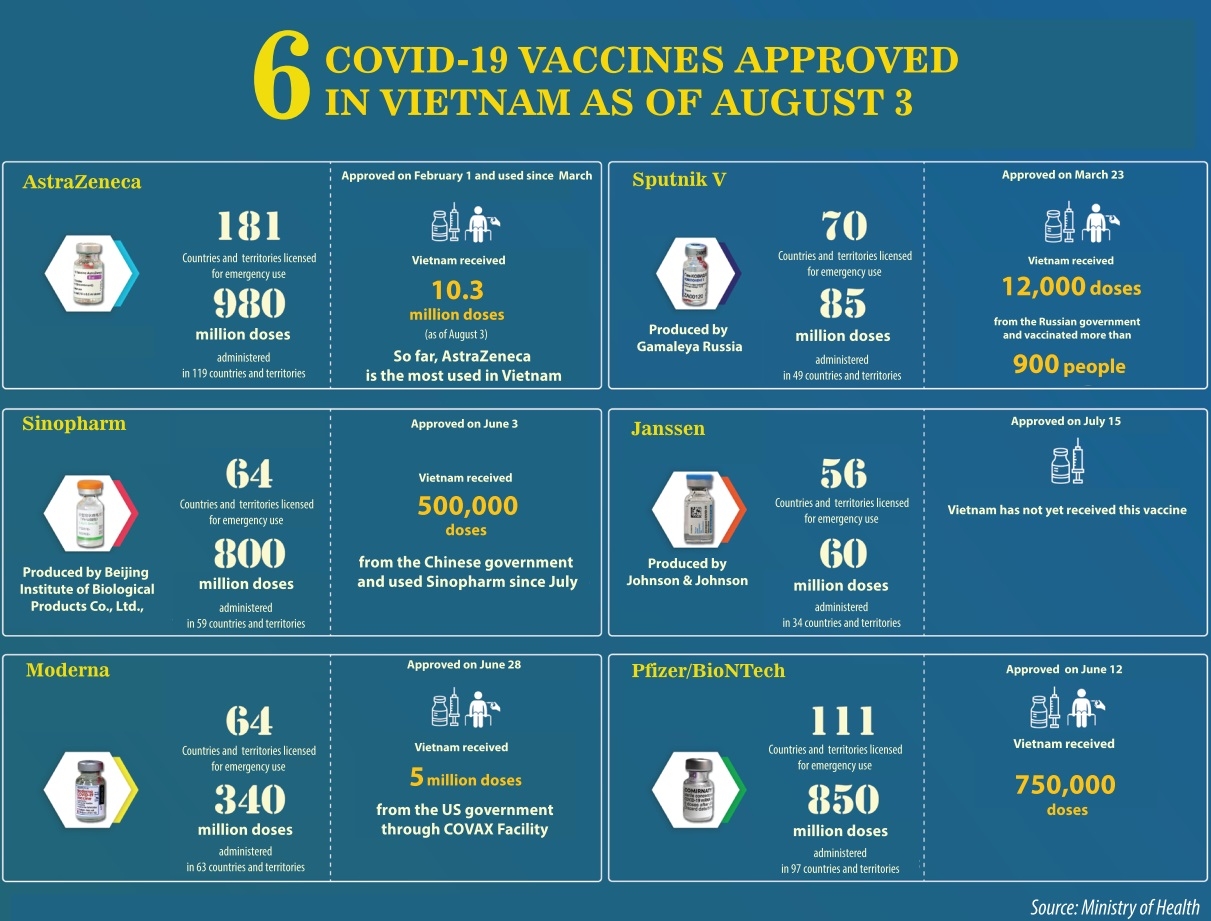South’s pandemic struggle intensifies
Southern cities and provinces are in need of support from other localities. How has the industry acted to increase efficiency for the prevention of and fight against COVID-19?
 |
| Tran Van Thuan, Deputy Minister of Health |
On August 3, the Government Office issued an urgent dispatch about the increasing health task forces’ capabilities for pandemic prevention and fight to the Minister of Health and the chairmen of the provincial and municipal People’s Committees.
Accordingly, the prime minister asked the Minister of Health to further quicken staff training, treatment, and resuscitation capacities across the country, as well as take initiative in mobilising task forces to support cities and provinces which have high number of infections and serious cases.
The chairmen of the provincial and municipal People’s Committees under the central government are requested to create favourable conditions for local health units and facilities to improve capacities.
Earlier, Deputy Minister of Health Nguyen Truong Son, head of the Ministry of Health’s (MoH) special unit in Ho Chi Minh City, called on colleagues, lecturers, and students at medical schools, as well as retired doctors and nurses and those at private health facilities, to join the industry’s efforts to support vaccination and treatment.
The calling received great support from health professionals nationwide, especially from the north. So far, over 3,000 volunteers registered to join the coronavirus battle in Ho Chi Minh City.
Central-level hospitals sent their staffs to Ho Chi Minh City and other southern provinces that were seriously hit by the pandemic. For instance, Bach Mai Hospital sent more than 200 people to Ho Chi Minh City to operate at the resuscitation centre at Field Hospital No. 16. Likewise, Viet Duc University Hospital and Hue Central Hospital sent hundreds of healthcare workers to the city.
Leading professionals from the E Hospital, the National Hospital of Paediatrics, the Vietnam National Cancer Hospital, Hanoi Medical University Hospital (HMUH), and others are also working closely with local staff in southern provinces and cities to help with COVID-19 treatment.
Thus far, the total number of professionals sent to Ho Chi Minh City and southern provinces has reached 10,000. I am highly appreciating their effort.
 |
What does the support mean to the seriously hit areas, and will this help ease the situation there?
Many of these people have been working continuously with high intensity for many days. This might decrease their work quality. Therefore, it is necessary to substitute their efforts so that they can take a rest and then continue the fight.
We are aware that the battle will continue and be prolonged for some time. Hence, timely and reasonable rotation of health task forces is important to ensure the quality of their work.
In addition, the operation of active resuscitation centres requires a huge number of professionals. In this time, we need more volunteers to support the efforts in the south.
The MoH sent leaders of central hospitals like Bach Mai, Viet Duc, and HMUH to quicken the operation of active resuscitation centres in southern cities and provinces. How has the work gone so far?
The MoH directed the establishment of 12 active resuscitation centres with a scale of 200-3,000 sickbeds each, located at Bach Mai Hospital 2, Viet Duc University Hospital 2, National Hospital of Tropical Diseases, National Hospital of Lung Diseases, HMUH 2, Ho Chi Minh City Medical University Hospital, and many others.
In Ho Chi Minh City, the MoH and the city established a 1,000-sickbed resuscitation hospital and assigned Cho Ray Hospital to operate it. Meanwhile, four active resuscitation centres, each with 500 sickbeds, are operated by Bach Mai Hospital, Viet Duc, Hue Central Hospital, and Ho Chi Minh City Medical University Hospital.
These hospitals sent their qualified staff, modern and medical devices to these centres. The MoH supplies medical devices and supplies, while local authorities and health departments support with logistics in treatment.
The centres aim to ease the COVID-19 death rate. Over the past week, the hospital saved the lives of over 100 patients; and another 20 serious cases recovered and were discharged from the hospital.
This shows that active resuscitation centres play a very important role in COVID-19 treatment. The MoH, the healthcare industry, and Ho Chi Minh City’s authorities are operating at full capacity to ensure smooth operation of the centres.
What the stars mean:
★ Poor ★ ★ Promising ★★★ Good ★★★★ Very good ★★★★★ Exceptional
 Tag:
Tag:
Themes: Healthcare Platform
- Takeda Vietnam awarded for ongoing support of Vietnam’s sustainability efforts
- Self-care signals shift towards sustainable healthcare
- DKSH to acquire Vietnamese healthcare distributor Biomedic
- Two national hospitals expand capacity with new facilities
- Vietnam moves to enhance disease prevention, equity, and sustainability
Related Contents
Latest News
More News
- Ho Chi Minh City hits $8.37 billion in FDI (December 29, 2025 | 08:28)
- Tax sector wraps up 2025 and sets priorities for next year (December 25, 2025 | 14:00)
- Heavy industries set for pilot greenhouse gas quotas (December 25, 2025 | 10:00)
- $250 million deal targets women-owned SMEs, sustainable agriculture (December 22, 2025 | 17:40)
- UOB sees Vietnam growth easing in fourth quarter (December 22, 2025 | 17:39)
- Government moves to establish International Financial Centre (December 21, 2025 | 21:00)
- Vietnam's IFC to target global investment flows (December 21, 2025 | 18:00)
- Ha Tinh breaks ground on major Vingroup industrial and energy projects (December 19, 2025 | 18:24)
- EVN launches major power infrastructure projects nationwide (December 19, 2025 | 18:17)
- VAL inaugurates second production line to meet domestic animal feed demand (December 19, 2025 | 16:37)























 Mobile Version
Mobile Version